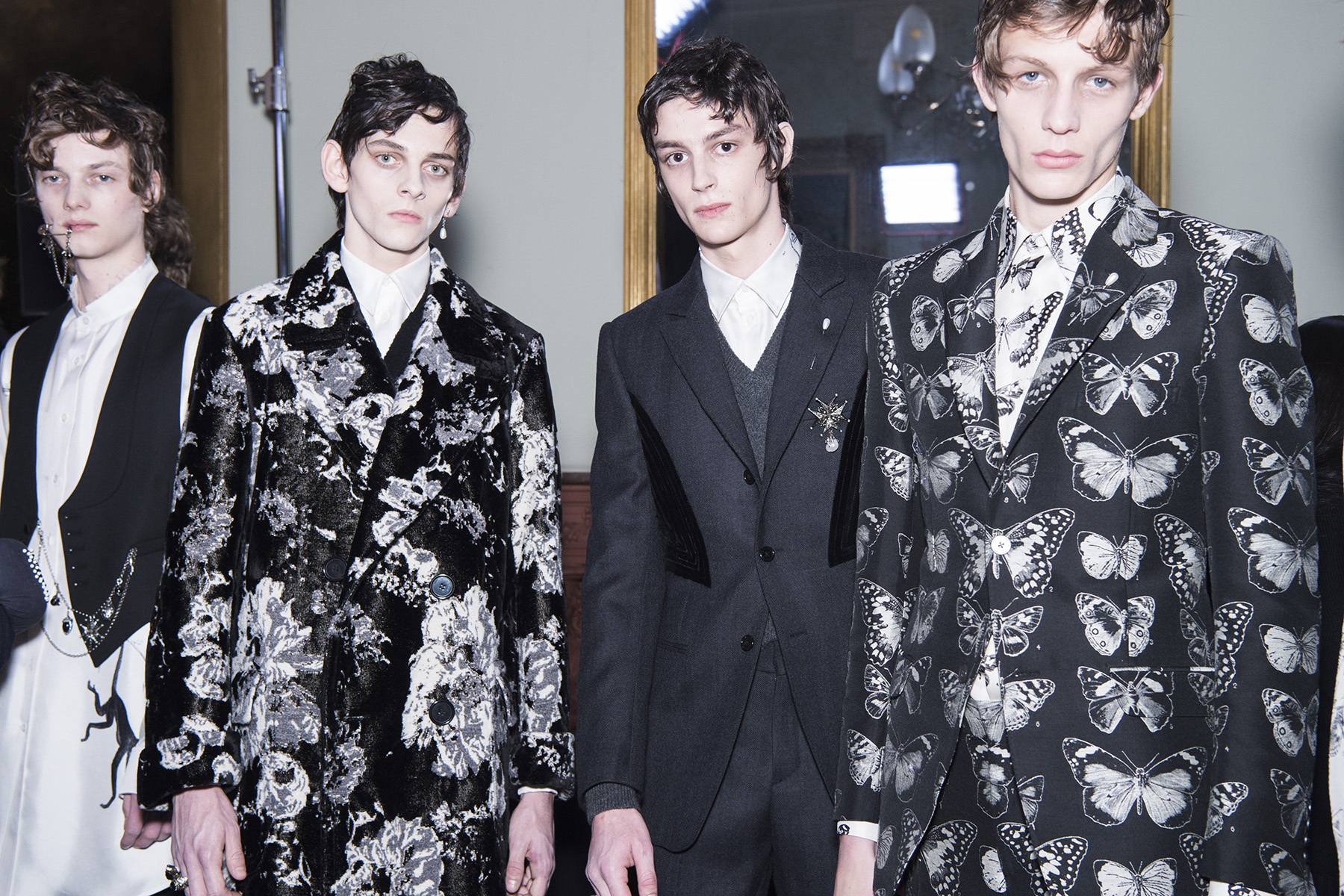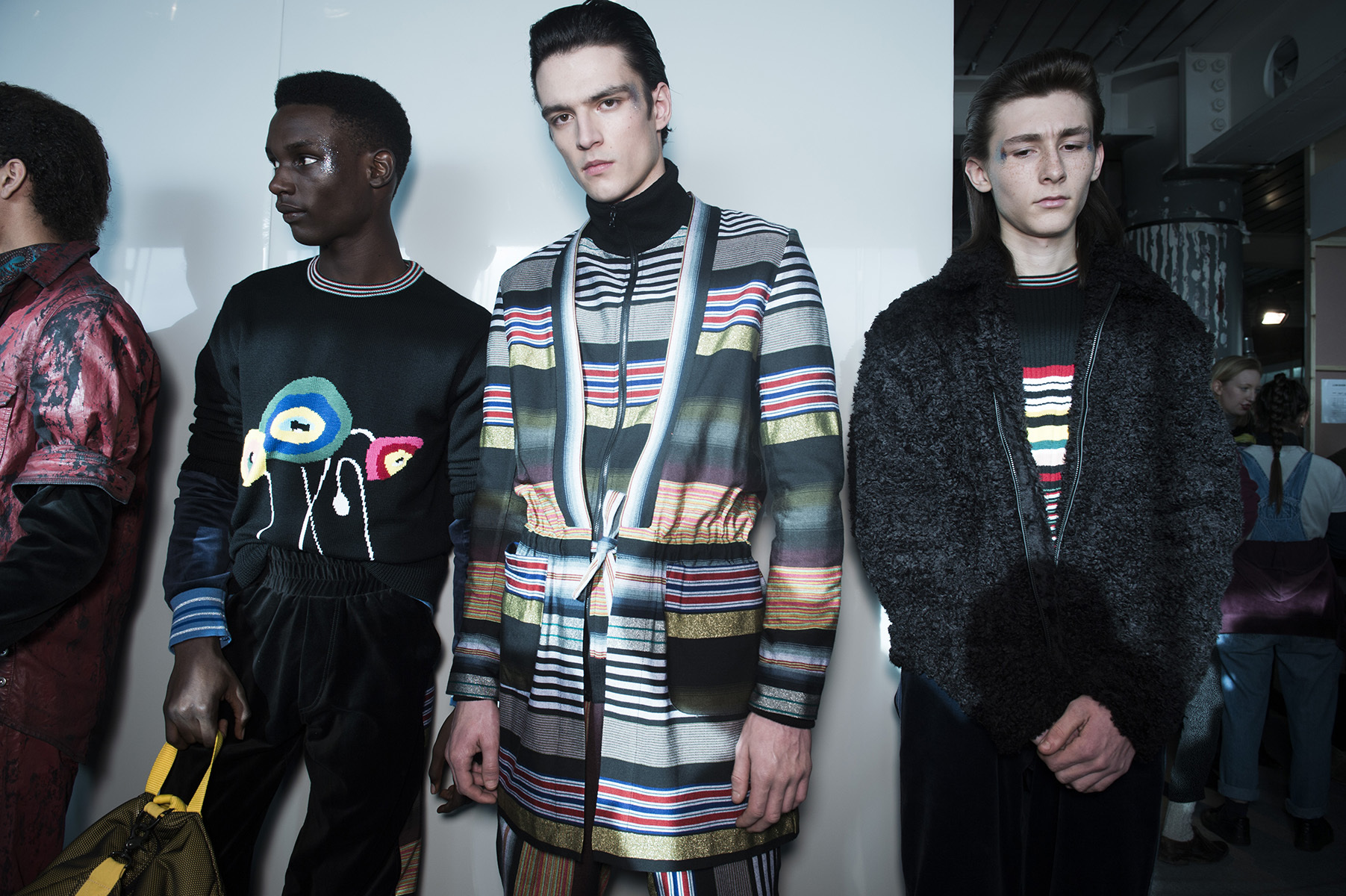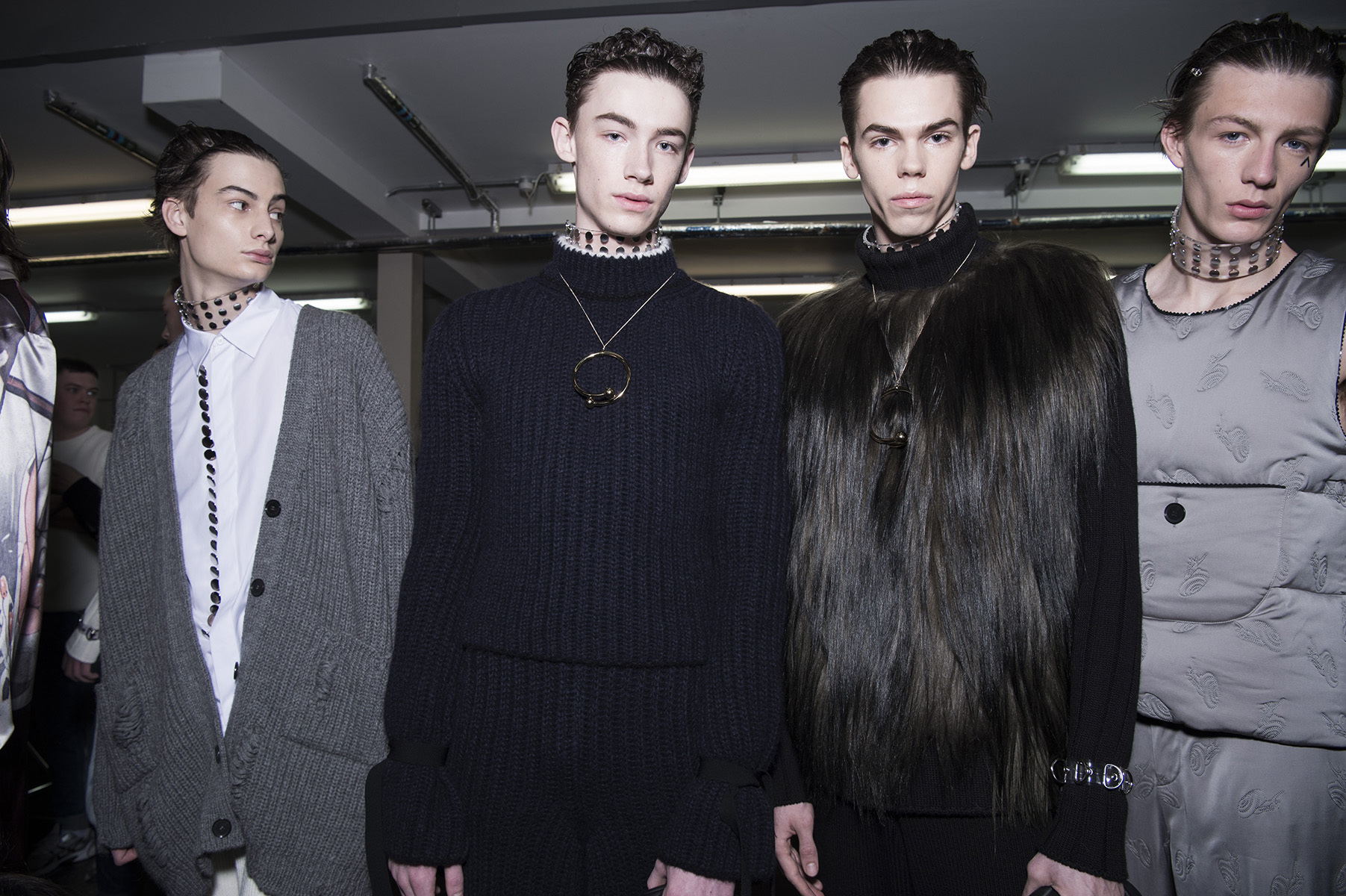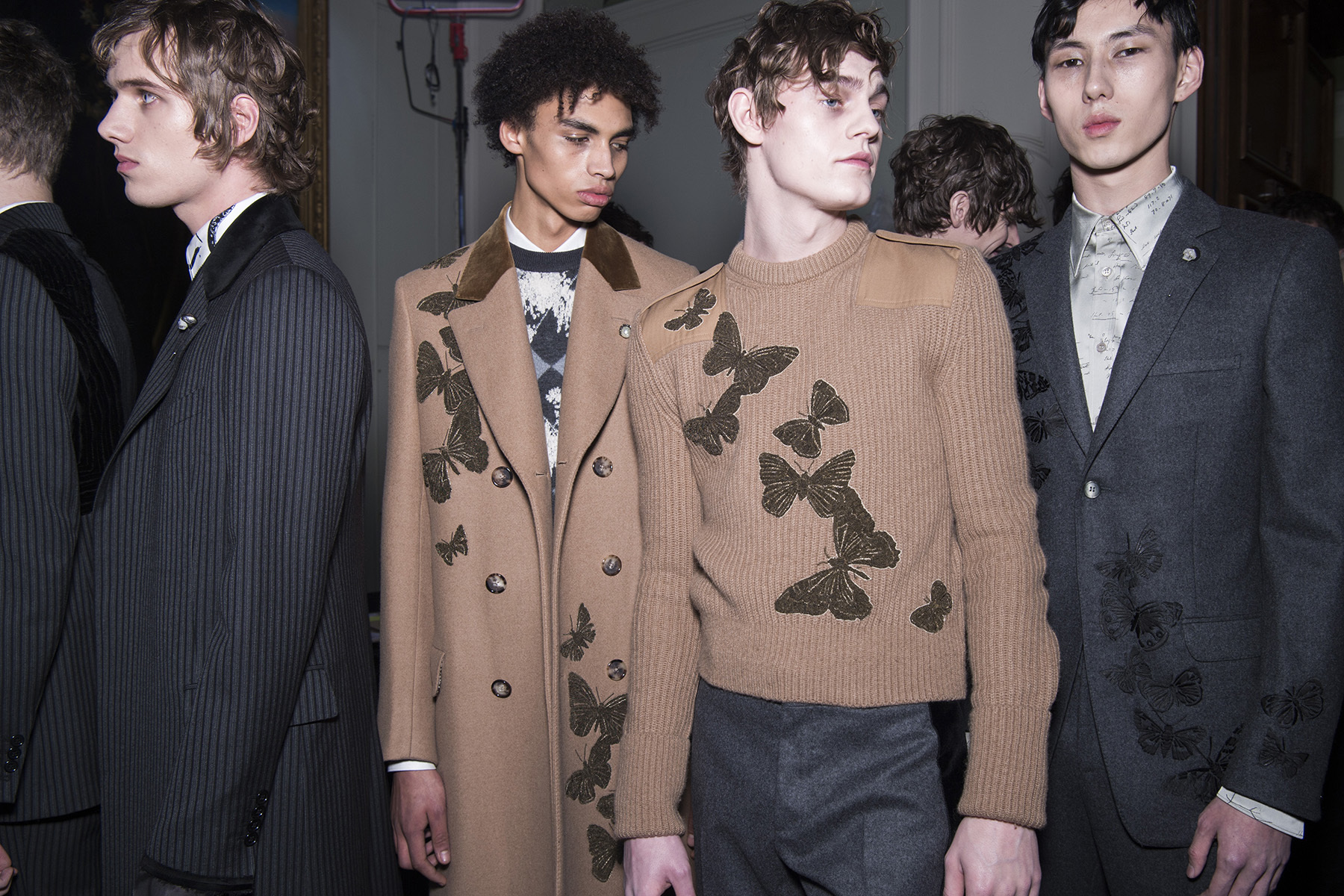David Bowie was British menswear’s undisputed biggest icon and influencer. As the fashion industry and the shows currently unfolding in London go into mourning following his untimely death last night, you can’t help but think of the Englishness that played such an innate role in Bowie’s creation. He was a master of characters just like British menswear itself, instinctively drawing on the historic style archive of his country and, from the 60s onwards, helping more than anyone else in the 20th century to redefine and revolutionize it. Sarah Burton’s ravishing Alexander McQueen collection on the third day of the London men’s shows was a tribute to that most English of fashion periods: Victorian times, and its establishment of what Burton called “the basis of a great men’s wardrobe.” In many ways, it was the basis of a great king’s wardrobe—majestic coats with gloomy flora and fauna motifs and magical military tunics with hussar embroidery and the most exquisite embellishment came out in a parade you never wanted to end.

“It’s the idea of a traveller and a collector. We started with Charles Darwin and the idea of voyage, discovery, natural history—collecting, the way that men collect and treasure things,” Burton explained backstage, surrounded by a congregated press, who upon exit seemed unanimous: this was one of the best Alexander McQueen men’s collections in years, and a worthy homage to one of the many shapes of the Englishness, which always characterized the house. At Moschino, Jeremy Scott moved his show into a church in Mayfair — the very heart of London — and dedicated his collection to the work of the East London English-Austrian art duo Gilbert and George, whose trademark religious cross motives became the motif of this Moschino collection. “They said, ‘Take it and have fun with it.’ And they’ve been such a joy to work with and so supportive about all the different ideas,” Scott said after a show he noted had been one of his most time-consuming ever, for the intricate patterns and oversaturated coloring that defined it.

Gilbert and George’s anti-elitist approach to art was founded in the inclusive spirit of a modern 70s England, and London in particular. When James Long devoted his pattern-centric collection to his “local heroes and the people on the streets who inspire me,” he was capturing that exact sensibility. “It’s quite honest in a way. It’s what’s real to me. When everything is so crazy you have to do what’s real to you, don’t you?” Long pondered post-show. You’d have to know a wide selection of his local heroes to define the specific influences that made up the collection, but between the floral prints and multi-stripes and techno camouflage, it was about the diversity of London’s often-eccentric personalities. As for Long’s down-to-earth frame of mind, he said it had to do with all the recent industry discussions about the overloaded fashion system. “When everyone’s like ‘there’s so much fashion’ and everything, you kind of realize what’s around you: the people who wear my clothes, and the people who inspire me.”

Next week, he will become one of those multiple-collection-designing designers, when he debuts his first collection for Iceberg in Milan. “On it, on it!” Long promised. Between Loewe and J.W. Anderson, it’s a role Jonathan Anderson already fills, and he hasn’t forgotten his London roots. He told backstage-goers his collection for the latter brand on Sunday morning was based on “urban vampires.” With the wealth of subcultures upon which it drew — all of which originated in London — you could see that as a figurative statement about us Londoners, forever sucking up new style directions and urban tribes. Certainly, Anderson’s sexy, hyper-textured collection of silks and knitted pajama things, anime and various fetish references could have been pieced together from a trip to Camden Market on any given day. He might be Irish, but this was Englishness at its most eclectic.

Margaret Howell and Pringle of Scotland’s Massimo Nicosia both set their sights on the understated, poetic young student—the style hero of British literature. Howell’s slick fair-isle jumpers instantly took you back to Cambridge or Oxford in the 20s, while Nicosia said his young gentleman could have roamed the halls of Glasgow School of Art in the early 20th century. On his mood board backstage, he had a picture of a young Lucien Freud in his atelier, stating “it represents what I had in mind for my boys.” But the Pringle collection’s free use of English institutions — such as a grid that turned into a Prince of Wales check and then gradually turned into a tartan styled with a certain mod sensibility — couldn’t help but remind you of London in the 60s and 70s. These were eras defined by revolutionary style and fashion experimentation, of which Bowie was part—and always ahead. As the London men’s shows come to an end and the fashion circus sets sails towards new menswear in Florence, Milan and Paris, his legend will be more present than ever.

Credits
Text Anders Christian Madsen
